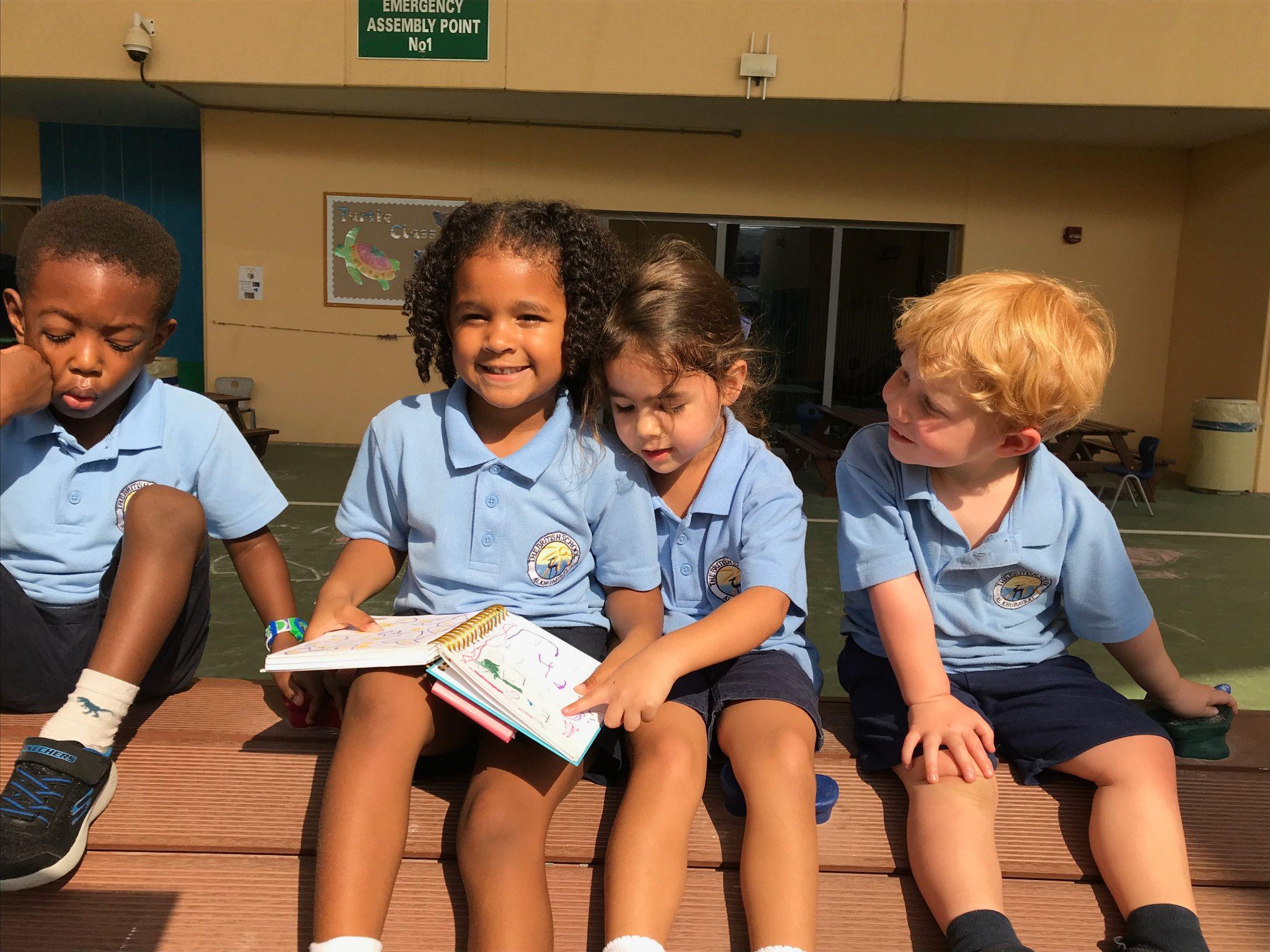


LONG TERM PLAN THE BRITISH SCHOOL AL KHUBAIRAT RATED OUTSTANDING BY ADEK AND BSO Nursery Early Years Foundation Stage - Development MattersEarly Learning Goals TOP SCHOOL AWARDS 2022 Best School in the UAE for Fine Art and Creative Studio Work TOP SCHOOL AWARDS 2022 Best School for Post-16 Education in the UAE
In Nursery, we know that children develop at different rates. Children born in the Autumn term may well have reached development milestones that children born in the Summer may not have reached. We use our understanding of child development to ensure that we are meeting the needs of all our children. The statements below are all taken from the Development Matters Non-Statutory guidance, which can be found here.
PRIME AREAS - PERSONAL, SOCIAL AND EMOTIONAL DEVELOPMENT
Children who are 3 and 4 will be learning to:
Children’s personal, social and emotional development (PSED) is crucial for children to lead healthy and happy lives, and is fundamental to their cognitive development. Underpinning their personal development are the important attachments that shape their social world. Strong, warm and supportive relationships with adults enable children to learn how to understand their own feelings and those of others.
Children should be supported to manage emotions, develop a positive sense of self, set themselves simple goals, have confidence in their own abilities, to persist and wait for what they want and direct attention as necessary. Through adult modelling and guidance, they will learn how to look after their bodies, including healthy eating, and manage personal needs independently. Through supported interaction with other children they learn how to make good friendships, co-operate and resolve conflicts peaceably. These attributes will provide a secure platform from which children can achieve at school and in later life.
● Select and use activities and resources, with help when needed. This helps them to achieve a goal they have chosen, or one which is suggested to them.

● Develop their sense of responsibility and membership of a community.
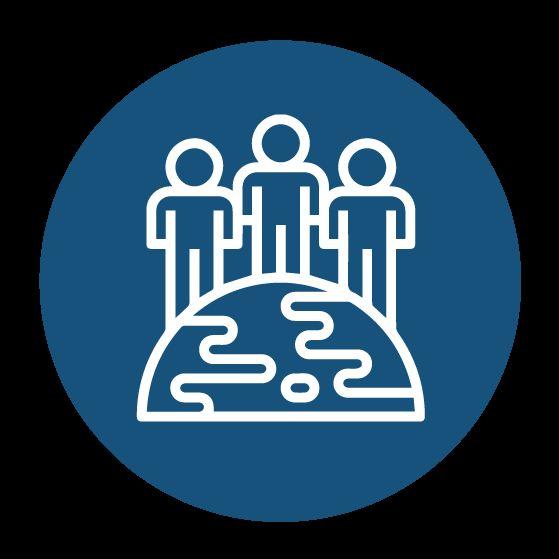
● Become more outgoing with unfamiliar people, in the safe context of their setting.
● Show more confidence in new social situations.
● Develop appropriate ways of being assertive
● Talk with others to solve conflicts
● Talk about their feelings using words like ‘happy’, ‘sad’, ‘angry’ or ‘worried’.
● Understand gradually how others might be feeling.
● Play with one or more other children, extending and elaborating play ideas.

● Find solutions to conflicts and rivalries. For example, accepting that not everyone can be Spider-Man in the game, and suggesting other ideas.
● Increasingly follow rules, understanding why they are important.
● Remember rules without needing an adult to remind them.
PRIME AREAS - COMMUNICATION AND LANGUAGE (CL)


The development of children’s spoken language underpins all seven areas of learning and development. back-and-forthChildren’sinteractions from an early age form the foundations for language and cognitive development. The number and quality of the conversations they have with adults and peers throughout the day in a language-rich environment is crucial. By commenting on what children are interested in or doing, and echoing back what they say with new vocabulary added, practitioners will build children’s language effectively.

Reading frequently to children, and engaging them actively in stories, non-fiction, rhymes and poems, and then providing them with extensive opportunities to use and embed new words in a range of contexts, will give children the opportunity to thrive. Through conversation, storytelling and role play, where children share their ideas with support and modelling from their teacher, and sensitive questioning that invites them to elaborate, children become comfortable using a rich range of vocabulary and language structures.
Speaking:
● Sing a large repertoire of songs.
● Know many rhymes, be able to talk about familiar
● books, and be able to tell a long story.
● Develop their communication but may continue to have problems with irregular tenses and plurals, such as ‘runned’ for ‘ran’, ‘swimmed’ for ‘swam’.
● Develop their pronunciation but may have problems saying: some sounds: r, j, th, ch, and sh multisyllabic words such as ‘pterodactyl’, ‘planetarium’ or ‘hippopotamus’.
● Use longer sentences of four to six words.
● Be able to express a point of view and to debate when they disagree with an adult or a friend, using words as well as actions.
● Start a conversation with an adult or a friend and continue it for many turns.
● Use talk to organise themselves and their play: “Let’s go on a bus... you sit there... I’ll be the driver.”
● Listening, Attention and Understanding: Use a wider range of vocabulary.
● Understand a question or instruction that has two parts, such as: “Get your coat and wait at the door”.
● Understand ‘why’ questions, like: “Why do you think the caterpillar got so fat?”
PRIME AREAS - PHYSICAL DEVELOPMENT

Physical activity is vital in children’s all-round development, enabling them to pursue happy, healthy and active lives. Gross and fine motor experiences develop incrementally throughout early childhood, starting with sensory explorations and the development of a child’s strength, co-ordination and positional awareness through tummy time, crawling and play movement with both objects and adults.
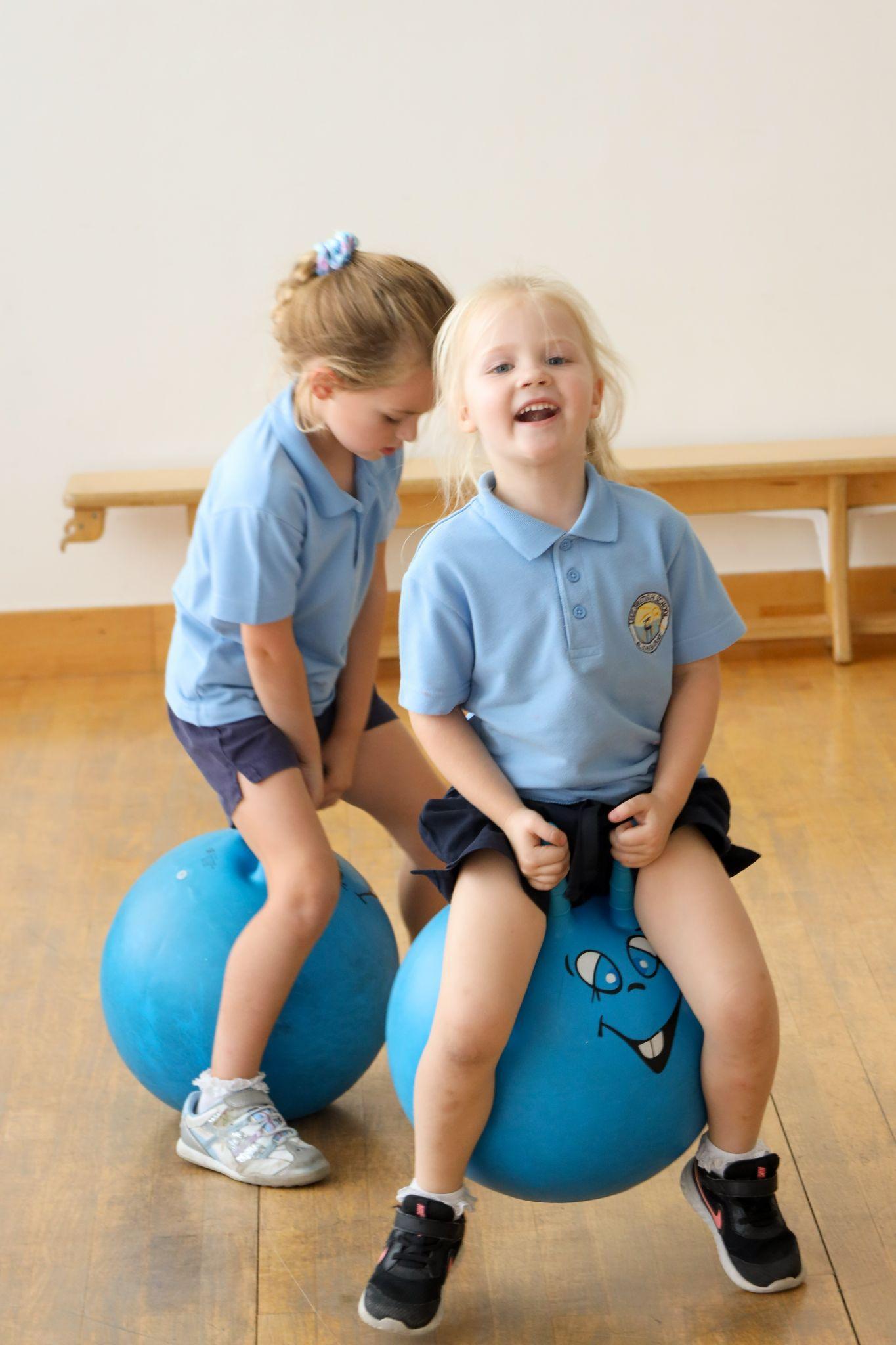
By creating games and providing opportunities for play both indoors and outdoors, adults can support children to develop their core strength, stability, balance, spatial awareness, co-ordination and agility. Gross motor skills provide the foundation for developing healthy bodies and social and emotional well-being. Fine motor control and precision helps with hand-eye co-ordination which is later linked to early literacy. Repeated and varied opportunities to explore and play with small world activities, puzzles, arts and crafts and the practice of using small tools, with feedback and support from adults, allow children to develop proficiency, control and confidence.
Gross motor skills:
● Continue to develop their movement, balancing, riding (scooters, trikes and bikes) and ball skills. Go up steps and stairs, or climb up apparatus, using alternate feet. Skip, hop, stand on one leg and hold a pose for a game like musical statues. Use large-muscle movements to wave flags and streamers, paint and make marks.

● Start taking part in some group activities which they make up for themselves, or in teams. Increasingly be able to use and remember sequences and patterns of movements which are related to music and rhythm.
● Match their developing physical skills to tasks and activities in the setting. For example, they decide whether to crawl, walk or run across a plank, depending on its length and width.
● Choose the right resources to carry out their own plan. For example, choosing a spade to enlarge a small hole they dug with a trowel. Collaborate with others to manage large items, such as moving a long plank safely, carrying large hollow blocks.
Fine motor skills:
● Use one-handed tools and equipment, for example, making snips in paper with scissors.
● Use a comfortable grip with good control when holding pens and pencils.
● Show a preference for a dominant hand.
● Be increasingly independent as they get dressed and undressed, for example, putting coats on and doing up zips.
SPECIFIC AREAS - LITERACY
It is crucial for children to develop a life-long love of reading. Reading consists of two dimensions: language comprehension and word reading. Language comprehension (necessary for both reading and writing) starts from birth. It only develops when adults talk with children about the world around them and the books (stories and non-fiction) they read with them, and enjoy rhymes, poems and songs Skilledtogether.wordreading, taught later, involves both the speedy working out of the pronunciation of unfamiliar printed words (decoding) and the speedy recognition of familiar printed words. Writing involves transcription (spelling and handwriting) and composition (articulating ideas and structuring them in speech, before writing).
Phonological Awareness:

Understand the five key concepts about print:

● print has meaning
● print can have different purposes
● we read English text from left to right and from top to bottom
● the names of the different parts of a book
● page sequencing
Develop their phonological awareness, so that they can:

● spot and suggest rhymes
● count or clap syllables in a word
● recognise words with the same initial sound, such as money and mother
Comprehension:
● Engage in extended conversations about stories, learning new vocabulary.
Writing:
● Use some of their print and letter knowledge in their early writing. For example: writing a pretend shopping list that starts at the top of the page; writing ‘m’ for mummy. Write some or all of their name.
SPECIFIC AREAS - MATHEMATICS
Developing a strong grounding in number is essential so that all children develop the necessary building blocks to excel mathematically. Children should be able to count confidently, develop a deep understanding of the numbers to 10, the relationships between them and the patterns within those numbers.
By providing frequent and varied opportunities to build and apply this understanding – such as using manipulatives, including small pebbles and tens frames for organising counting – children will develop a secure base of knowledge and vocabulary from which mastery of mathematics is built.
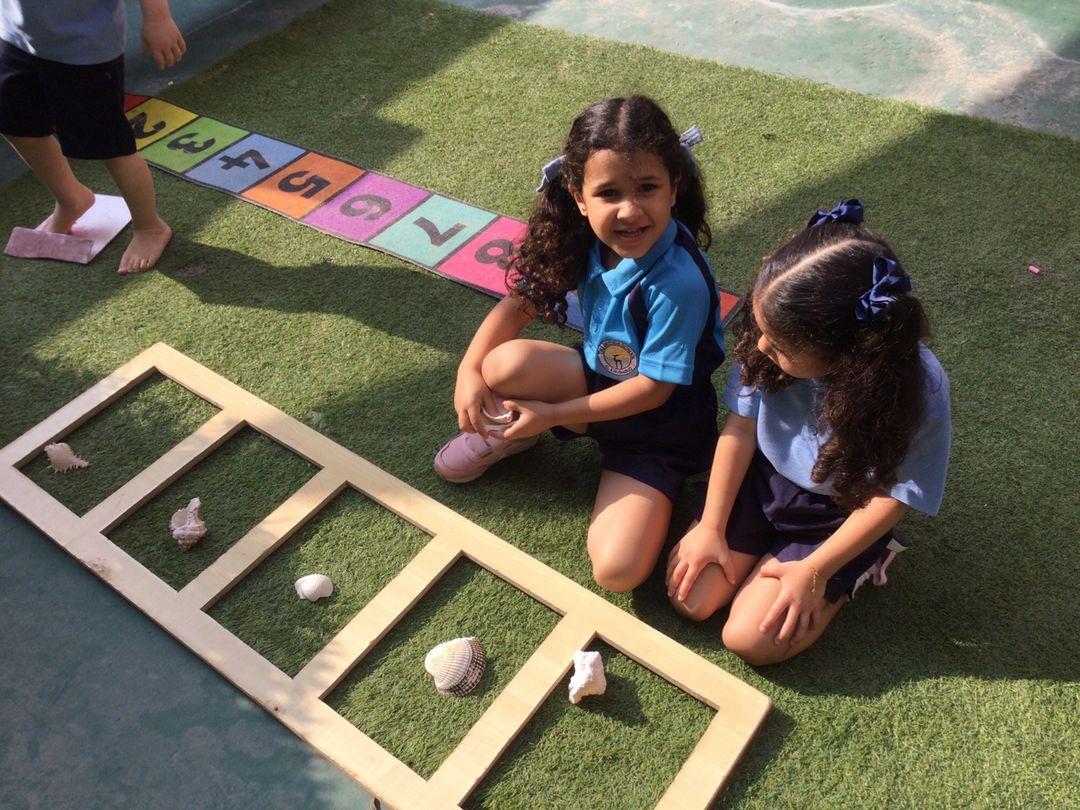
In addition, it is important that the curriculum includes rich opportunities for children to develop their spatial reasoning skills across all areas of mathematics including shape, space and measures. It is important that children develop positive attitudes and interests in mathematics, look for patterns and relationships, spot connections, ‘have a go’, talk to adults and peers about what they notice and not be afraid to make mistakes.
Number:
● Develop fast recognition of up to 3 objects, without having to count them individually (‘subitising’).
● Recite numbers past 5.
● Say one number for each item in order: 1,2,3,4,5.
● Know that the last number reached when counting a small set of objects tells you how many there are in total (‘cardinal principle’).
● Show ‘finger numbers’ up to 5.
● Link numerals and amounts: for example, showing the right number of objects to match the numeral, up to 5.
● Experiment with their own symbols and marks as well as numerals.
● Solve real world mathematical problems with numbers up to 5.

● Compare quantities using language: ‘more than’, ‘fewer than’.
Position and Shape

● Talk about and explore 2D and 3D shapes (for example, circles, rectangles, triangles and cuboids) using informal and mathematical language: ‘sides’, ‘corners’; ‘straight’, ‘flat’, ‘round’.
● Understand position through words alone – for example, “The bag is under the table,” – with no pointing.
● Describe a familiar route.
● Discuss routes and locations, using words like ‘in front of’ and ‘behind’.
● Make comparisons between objects relating to size, length, weight and capacity.
● Select shapes appropriately: flat surfaces for building, a triangular prism for a roof, etc. Combine shapes to make new ones – an arch, a bigger triangle, etc.
Numerical patterns:
● Talk about and identify the patterns around them. For example: stripes on clothes, designs on rugs and wallpaper. Use informal language like ‘pointy’, ‘spotty’, ‘blobs’, etc.
● Extend and create ABAB patterns – stick, leaf, stick, leaf.
● Notice and correct an error in a repeating pattern.
● Begin to describe a sequence of events, real or fictional, using words such as ‘first’, ‘then...’
SPECIFIC UNDERSTANDINGAREASTHEWORLD
Understanding the world involves guiding children to make sense of their physical world and their community. The frequency and range of children’s personal experiences increases their knowledge and sense of the world around them – from visiting parks, libraries and museums to meeting important members of society such as police officers, nurses and firefighters.
In addition, listening to a broad selection of stories, non-fiction, rhymes and poems will foster their understanding of our culturally, socially, technologically and ecologically diverse world. As well as building important knowledge, this extends their familiarity with words that support understanding across domains. Enriching and widening children’s vocabulary will support later reading comprehension.
The Natural World:
● Use all their senses in hands-on exploration of natural materials.
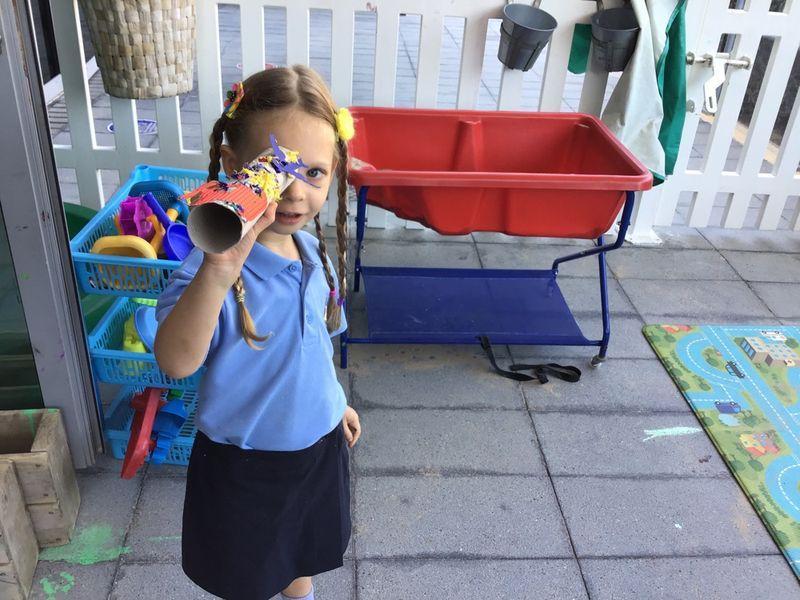
● Explore collections of materials with similar and/or different properties.

● Talk about what they see, using a wide vocabulary.
● Explore how things work.
● Plant seeds and care for growing plants.
● Understand the key features of the life cycle of a plant and an animal.

● Begin to understand the need to respect and care for the natural environment and all living things.
● Explore and talk about different forces they can feel.
● Talk about the differences between materials and changes they notice.
People, Culture and Communities:
● Begin to make sense of their own life-story and family’s history.
● Show interest in different occupations.
● Continue developing positive attitudes about the differences between people.
● Know that there are different countries in the world and talk about the differences they have experienced or seen in photos.
Specific Areas - Expressive Arts and Design

The development of children’s artistic and cultural andtheyandprogressfundamentalexperiencesandfrequency,throughtovocabularyself-expression,theirishearofTheandwideexploreenablingengageopportunitieshaveimportantcreativity.imaginationsupportsawarenesstheirandItisthatchildrenregulartowiththearts,themtoandplaywitharangeofmediamaterials.qualityandvarietywhatchildrensee,andparticipateincrucialfordevelopingunderstanding,andabilitycommunicatethearts.Therepetitiondepthoftheiraretotheirininterpretingappreciatingwhathear,respondtoobserve.
Creating with Materials -
● Explore different materials freely, to develop their ideas about how to use them and what to make.
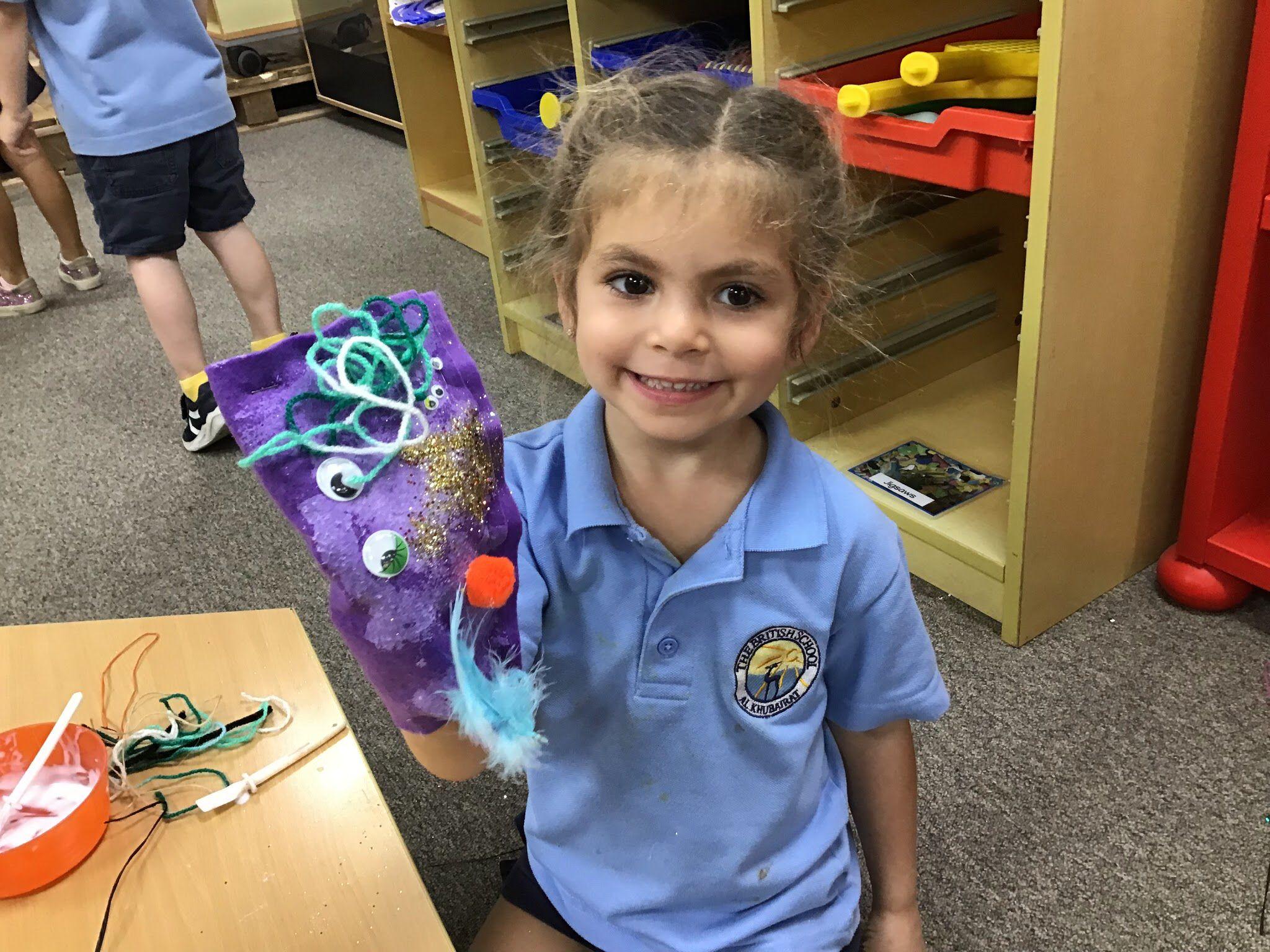
● Develop their own ideas and then decide which materials to use to express them.
● Join different materials and explore different textures.
● Create closed shapes with continuous lines and begin to use these shapes to represent objects.
● Draw with increasing complexity and detail, such as representing a face with a circle and including details.
● Use drawing to represent ideas like movement or loud noises.
● Show different emotions in their drawings and paintings, like happiness, sadness, fear, etc.
● Explore colour and colour mixing.
● Show different emotions in their drawings – happiness, sadness, fear, etc.
Being imaginative and Expressive -
● Take part in simple pretend play, using an object to represent something else even though they are not similar.
● Begin to develop complex stories using small world equipment like animal sets, dolls and dolls houses, etc.
● Make imaginative and complex ‘small worlds’ with blocks and construction kits, such as a city with different buildings and a park.
● Listen with increased attention to sounds.
● Respond to what they have heard, expressing their thoughts and feelings.
● Remember and sing entire songs.
● Sing the pitch of a tone sung by another person (‘pitch match’).

● Sing the melodic shape (moving melody, such as up and down, down and up) of familiar songs.
● Create their own songs or improvise a song around one they know.
● Play instruments with increasing control to express their feelings and ideas.
